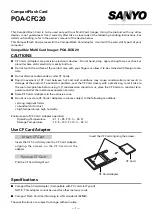
TCO
Reinvented
Copyright IBM Corporation 2009
13
“Thinner” system
The XIV system’s use of high capacity drives and ability to optimize every terabyte results
in fewer disks for the same volume needs; this translates to administrative cost savings
through fewer disks to manage.
Single-tier platform
The XIV system spares IT teams the administrative efforts otherwise required to support
additional architectures or migrate data from one tier to another in an attempt to keep up
with changing needs or trim storage costs.
Summary: How to reduce management costs
The IBM XIV system dramatically reduces storage management effort and related costs
by automating performance tuning and other traditionally manual management functions,
simplifying daily administrative tasks, and offering capacity efficiencies that reduce the
overall amount of physical capacity that needs to be managed. The XIV system further
reduces management costs by reducing the level of administrator skill needed.
Downtime Costs
Downtime is expensive. The loss or lack of access to mission-critical data can harm an
enterprise directly and indirectly. The XIV system keeps data availability continuous and
minimizes the extent and cost of downtime through redundant hardware, automated and
pro-active maintenance, and efficient hardware repair with minimal human intervention.
Less failure to be managed
Through ongoing automatic monitoring of hardware and data, the XIV system enables
–
in most cases
– detection of imminent failure in time to prevent data loss or data
unavailability. The system performs data scrubbing continuously, comparing data copies,
identifying and correcting inconsistencies quickly and efficiently. All system components
are redundant and constantly monitored to minimize downtime from physical failure. Upon
detecting signs of imminent failure, the system creates a third copy of the data on the at-
risk disk immediately and automatically alerts operations personnel. The system is
designed for component replacement on the fly, without downtime or even a perceptible
degradation in system performance.
Should a component fail without warning, the XIV system's rapid self-healing features
restore complete system redundancy in minutes, without disruption to vital enterprise
functions.
For more information on how the XIV system prevents and handles failure, see the
IBM
XIV Reliability Reinvented
white paper.






































